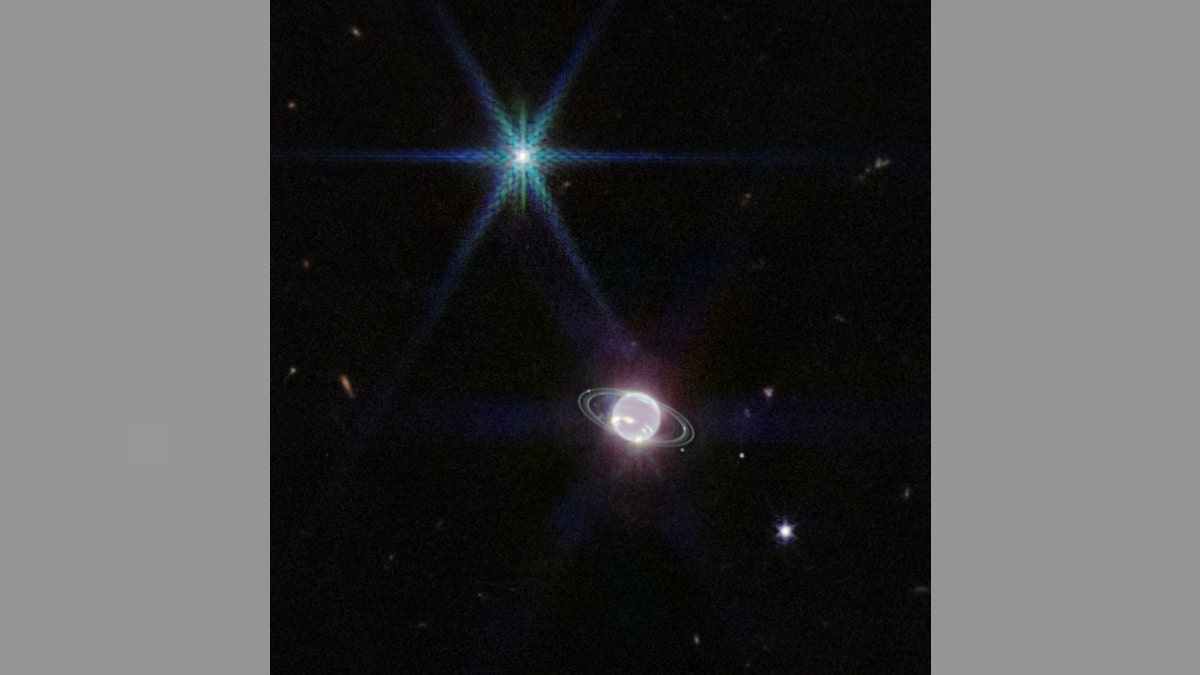The James Webb Space Telescope has captured Neptune in a whole new light.
The $10 billion-dollar NASA observatory captured the clearest view of the ice planet's rings in more than 30 years.
Some of the planet's rings have not been detected since NASA's Voyager 2 conducted its flyby in 1989 – the first spacecraft to observe Neptune.
The images the Webb team shared show the fainter dust bands, in addition to bright and narrow rings: the first time they have been seen in infrared light.
IN CLOSEST APPROACH TO EARTH IN 59 YRS., JUPITER TO REACH OPPOSITION

Webb’s Near-Infrared Camera images objects in the near-infrared range from 0.6 to 5 microns, so Neptune does not appear blue to Webb. In fact, the methane gas so strongly absorbs red and infrared light that the planet is quite dark at these near-infrared wavelengths, except where high-altitude clouds are present. Such methane-ice clouds are prominent as bright streaks and spots, which reflect sunlight before it is absorbed by methane gas. (Credits: NASA, ESA, CSA, STScI)
Neptune, which orbits in the remote and dark region of the outer solar system, is characterized as an ice giant due to the chemical make-up of its interior.
In visible light, it appears blue due to small amounts of methane gas in its atmosphere, but Neptune does not appear blue to Webb's Near-Infrared Camera.
"In fact, the methane gas so strongly absorbs red and infrared light that the planet is quite dark at these near-infrared wavelengths, except where high-altitude clouds are present. Such methane-ice clouds are prominent as bright streaks and spots, which reflect sunlight before it is absorbed by methane gas," NASA explained.

The ice giant Neptune and its 14 moons (Credit: NASA Webb Telescope/Twitter)
MARS PERSEVERANCE ROVER COLLECTS ORGANIC-RICH SAMPLES IN JEZERO CRATER
In addition, a thin line of brightness around the planet's equator could be a signature of global atmospheric circulation, powering Neptune's winds and storms.
Webb's images also show an "intriguing brightness" in the northern pole and the first indication of high-latitude clouds surrounding a vortex at the southern pole.

The ice giant Neptune and the Triton moon (Credit: NASA Webb Telescope/Twitter)
The telescope also caught a glimpse of Neptune's 14 known moons, including a bright point of light that is the large, unusual moon of Triton.
CLICK HERE TO GET THE FOX NEWS APP
Because Triton is covered in frozen, condensed nitrogen, it reflects 70% of the sunlight that hits it.





















